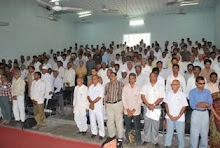PropNews Time: Wednesday, November 05, 2025.
Synopsis The Tamil Nadu Land Reforms Department has issued fresh guidelines to all district collectorates and revenue offices to strengthen the maintenance and classification of land records. The directive aims to ensure better record management, transparency, and quicker responses to Right to Information (RTI) queries. It comes after the State Information Commission raised concerns about missing or untraceable files. The circular specifies the types of landrelated records to be maintained, classification methods, safe storage practices, and a colour-coded filing system to clearly track pending and closed cases.
Synopsis The Tamil Nadu Land Reforms Department has issued fresh guidelines to all district collectorates and revenue offices to strengthen the maintenance and classification of land records. The directive aims to ensure better record management, transparency, and quicker responses to Right to Information (RTI) queries. It comes after the State Information Commission raised concerns about missing or untraceable files. The circular specifies the types of landrelated records to be maintained, classification methods, safe storage practices, and a colour-coded filing system to clearly track pending and closed cases.
The department instructed that records related to patta transfers, land acquisition, ownership, reclassification, encroachment, leasing of government land, land surrender, and land tax schemes must be maintained properly at the district level. Copies of these documents should also be forwarded to the Land Reforms Department to ensure uniform monitoring and oversight
The new directive follows observations made by the State Information Commission, which noted several cases where RTI petitions were rejected because relevant documents were either unavailable or untraceable. The Commission had earlier warned that such lapses could lead to administrative action. The department clarified that when RTI applications are received by the Land Reforms Department, they are redirected to the respective district collectorates under Section 6(3) of the RTI Act, making the district authorities responsible for processing and responding to such requests.
The circular outlines that all land-related files should be systematically classified into four categories retention disposals, disposals, standing orders, and current documents. Files marked as "retention disposals" are to be preserved permanently, while "disposals" may be destroyed after ten years. Standing orders and current documents are to be updated regularly. To improve accessibility, the department has introduced a colour-coded system black ink for closed files and red ink for pending files along with proper serial numbering and document numbers for each record. This system is expected to make tracking and retrieval of files easier for both officials and citizens.
The new directive follows observations made by the State Information Commission, which noted several cases where RTI petitions were rejected because relevant documents were either unavailable or untraceable. The Commission had earlier warned that such lapses could lead to administrative action. The department clarified that when RTI applications are received by the Land Reforms Department, they are redirected to the respective district collectorates under Section 6(3) of the RTI Act, making the district authorities responsible for processing and responding to such requests. The circular outlines that all land-related files should be systematically classified into four categories retention disposals, disposals, standing orders, and current documents.
Files marked as "retention disposals" are to be preserved permanently, while "disposals" may be destroyed after ten years. Standing orders and current documents are to be updated regularly. To improve accessibility, the department has introduced a colour-coded system black ink for closed files and red ink for pending files along with proper serial numbering and document numbers for each record. This system is expected to make tracking and retrieval of files easier for both officials and citizens. integrating physical and digital records, aligning with national land record modernisation initiatives promoted by the central government.















































































